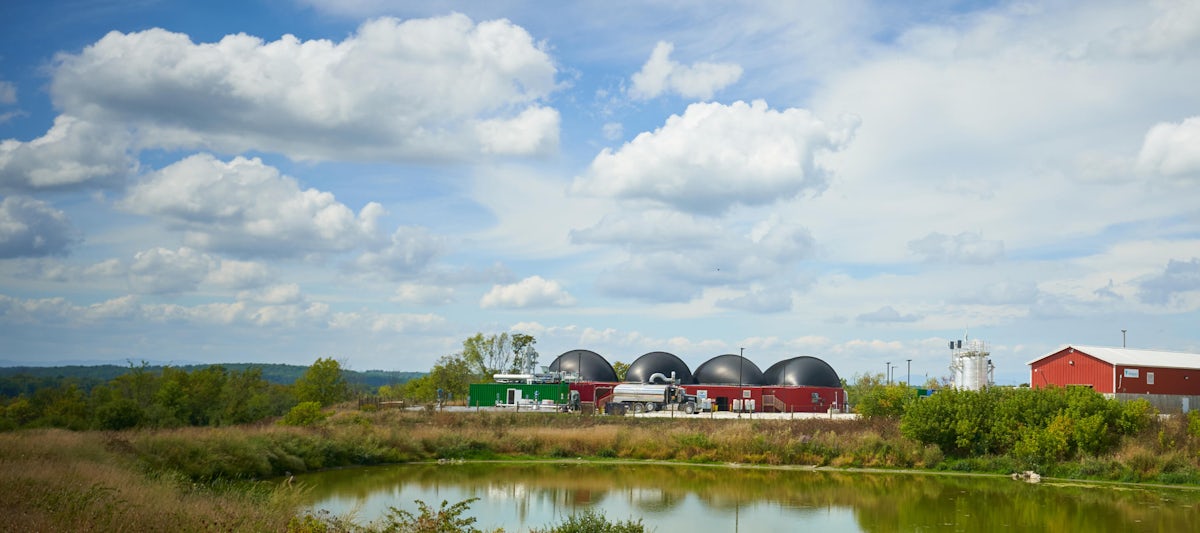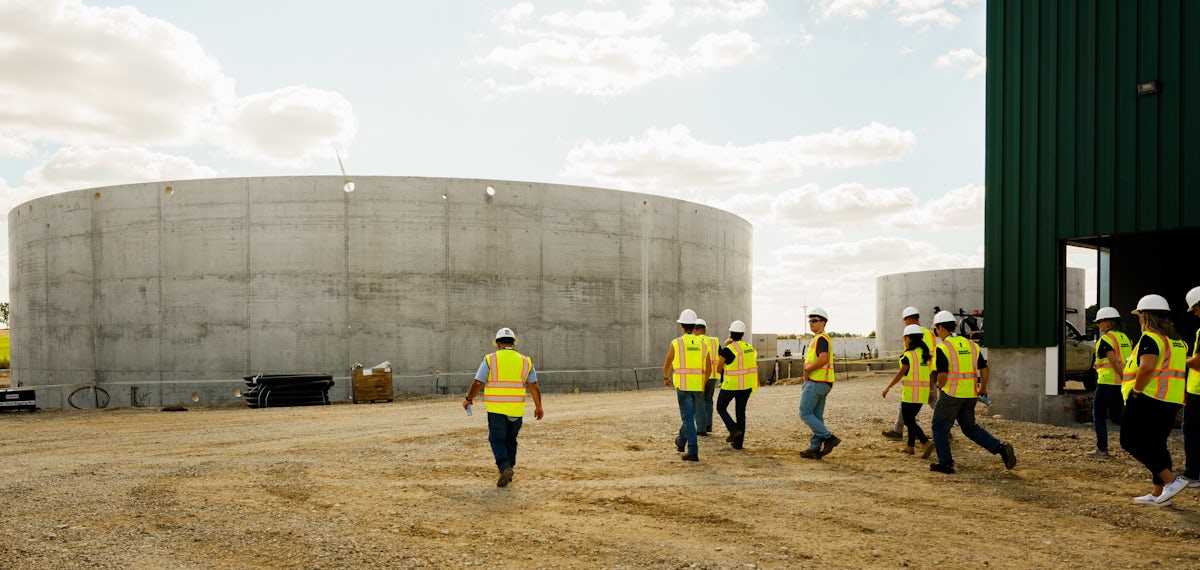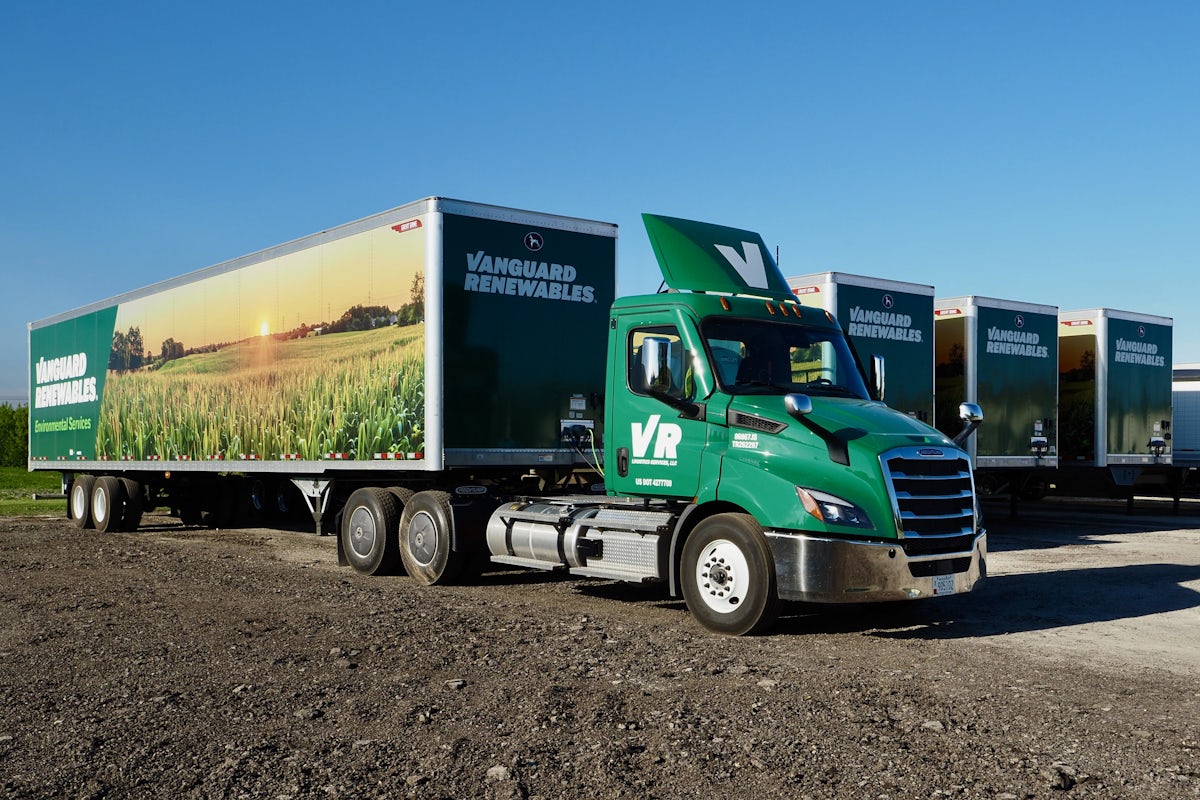Why RNG is the Fuel of the AI Age
October 14, 2025
How can data centers secure the reliable energy needed to power the AI era? The grid is struggling to keep up with surging electricity demand driven by the rapid growth of AI and its increased reliance on behind-the-meter (BTM) energy generation. The race is on for solutions that offer both resilience and a path to long-term sustainability. Renewable Natural Gas (RNG) is emerging as the frontrunner for those determined to meet their energy needs and lead responsibly.
Driven by rapid technological innovation and investments projected to reach $1 trillion by 2027, U.S. data centers are on track to consume between 325 and 580 TWh of electricity by 2028 — equivalent to 6.5–12% of total U.S. energy consumption. This unprecedented ramp-up signals the arrival of the AI era and its transformative potential. However, alongside AI’s promise comes a material challenge: matching soaring power demand with reliable, sustainable, and cost-effective energy. Data centers that have historically relied on the electric grid, Renewable Energy Credits (RECs), and green Power Purchase Agreements (PPAs) to meet climate targets are now facing critical shortages of these options. This presents a dilemma for technology companies with ambitious sustainability goals that cannot afford to fall behind in the race to deploy power-hungry AI.
On top of that, interconnection delays are exacerbating clean power procurement hurdles by preventing major data center sites from securing the power they need from front-of-the-meter (FTM) assets. The total capacity in the interconnection backlog continues to climb year over year, with more than 2 terawatts of projects awaiting connection. Delays for new projects can stretch up to eight years. Despite regulatory efforts to accelerate timelines, meaningful improvements are unlikely in the near term since the construction of new transmission lines and the procurement of critical equipment, such as transformers, will continue to stall progress.
Persistent interconnection delays and growing grid instability are creating a bottleneck for growth, prompting data centers to rethink how they secure power. In response, major hyperscalers and colocation sites are turning to BTM solutions, primarily those utilizing natural gas. Natural gas offers proven BTM dependability and practicality, minimizing costs and outage risks for pipeline-connected sites.
The U.S.’s abundant fossil natural gas reserves, reliable production, and extensive pipeline infrastructure also make it one of the most accessible, affordable, and dependable fuel options available today. For example, Meta is building multiple large-scale facilities with BTM gas-fired generation capacity, including a 200 MW BTM power plant for a data center in New Albany set to come online by the end of 2026.
BTM gas-fired generation offers an immediate answer to data centers’ explosive power needs but risks locking sites into infrastructure that conflicts with stringent sustainability goals. Renewable Natural Gas (RNG) offers a way out of this dilemma.
RNG is created by capturing methane emitted during the decomposition of food waste and other organic materials. Once purified, RNG is chemically identical to conventional natural gas but offers a significantly lower carbon footprint. While traditional natural gas has a carbon intensity (CI) of 60–70 grams of CO₂ per megajoule (gCO₂/MJ), RNG can achieve a negative CI score ranging from −35 to −125 gCO₂/MJ. Crucially, RNG is fully compatible with existing natural gas infrastructure — it can be injected directly into pipelines and used in electricity-generating gas turbines without any modifications. This makes it a win-win solution from both a capital expenditure (CapEx) and environmental standpoint.
RNG is also readily accessible. Any site with pipeline access can procure RNG through a mass balance system, similar to Virtual Power Purchase Agreements (VPPAs) and RECs. This mechanism allows buyers to purchase the environmental attributes, known as Renewable Thermal Credits (RTCs), from any supplier who connects to the national pipeline network. For example, a gas-powered data center can achieve net-zero emissions by continuing to use conventional pipeline natural gas while offsetting 35–50% of its consumption through the purchase of RNG RTCs.
Over the past five years, U.S. RNG production is on the rise, having grown at a compounded annual rate of 18%. This growth has seen the emergence of large and mature RNG suppliers that are capable of selling RNG at scale and at a highly competitive CI-adjusted cost. Innovative producers, like Vanguard Renewables, produce RNG with a finely calculated blend of farm and food waste, providing strong environmental benefits and utilizing a widely available network of predictable suppliers to deliver a carbon-negative fuel with full feedstock scalability. By 2029, Vanguard plans to produce over 12 BCF of carbon-negative RNG with a CI score of −35 to −120 gCO₂/MJ per year: enough to decarbonize 6.24 TWh of gas-generated electricity, equivalent to the consumption of 600,000 U.S. households.[1]
Modern RNG providers also offer some of the lowest-cost options for carbon abatement. This comes not only from competitive CI-adjusted pricing but also from the ability to use existing pipeline and power infrastructure, avoiding costly upgrades or stranded assets. In states like California, RNG enables BTM gas turbines, particularly backup generators, to participate in demand response (DR) programs, such as Pacific Gas & Electric Company’s (PG&E’s), which prohibit fossil-fuel use and provide significant financial incentives, among other benefits. Considering these factors, RNG achieves a Levelized Cost of Energy (LCOE) that is competitive with other low-carbon alternatives and is particularly attractive for decarbonizing backup power.
As the AI boom ramps up and energy demand surges, data center operators must adopt smarter, more innovative solutions. Global tech companies that lead in sustainability today face a critical choice: become tomorrow’s key emissions contributors or risk falling behind in AI development. RNG offers a viable solution.
Data center operators are already acting on the opportunity. Microsoft has partnered with Enchanted Rock to develop a BTM microgrid for its San Jose Data Center using RNG for backup power. The RNG, derived from food waste, is injected into the existing natural gas pipeline network, allowing Microsoft and Enchanted Rock to mass balance and claim the environmental attributes without additional CapEx. By using RNG in their backup generators, they also qualify for PG&E’s DR program, further enhancing the value of the approach.
RNG offers a fully scalable, drop-in, and cost-effective way to support data center expansion without compromising on the technology sector’s core commitment to sustainability. Looking ahead, operators aiming to maintain uptime while achieving net-zero emissions have a clear path forward: secure RNG supply now at the lowest CI-adjusted costs to lock in both reliability and sustainability at scale for the future of the AI Age.








